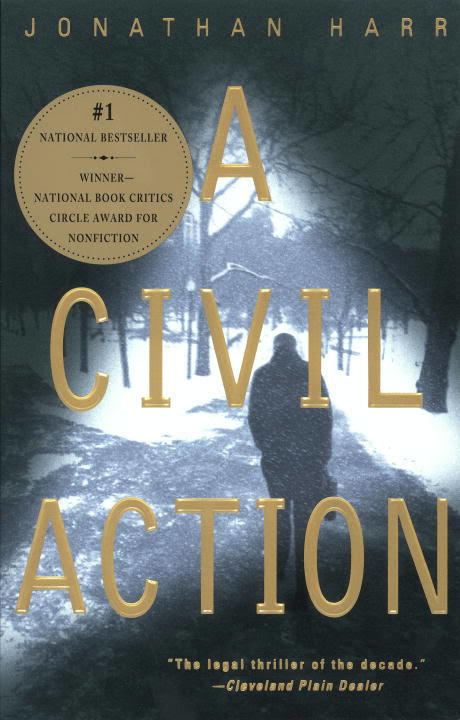7.8 /10 1 Votes7.8
Country United States Pages 500 OCLC 31969453 | 3.9/5 Goodreads Language English ISBN 978-0-394-56349-7 Originally published 29 August 1995 Page count 500 | |||||||||||||||||||||||||||||||||
 | ||||||||||||||||||||||||||||||||||
Followed by The Lost Painting: The Quest for a Caravaggio Masterpiece Genres Sociology, Fiction, Novel, Non-fiction, Speculative fiction Similar Law books, Non-fiction books | ||||||||||||||||||||||||||||||||||
A Civil Action is a 1995 work of non-fiction by Jonathan Harr about a water contamination case in Woburn, Massachusetts, in the 1980s. The book became a best-seller and won the National Book Critics Circle Award for nonfiction.
The case is Anderson v. Cryovac. The first reported decision in the case is at 96 F.R.D. 431 (denial of defendants' motion to dismiss).
A 1998 film of the same name, starring John Travolta as Jan Schlichtmann and Robert Duvall as Jerome Facher, was based on the book.
Plot summary
After finding that her child is diagnosed with leukemia, Anne Anderson notices a high incidence of leukemia, a relatively rare disease, in her city. Eventually she gathers other families and seeks a lawyer, Jan Schlichtmann, to consider their options.
Schlichtmann originally decides not to take the case due to both the lack of evidence and a clear defendant. Later picking up the case, Schlichtmann finds evidence suggesting trichloroethylene (TCE) contamination of the town's water supply by Riley Tannery, a subsidiary of Beatrice Foods; a chemical company, W. R. Grace; and another company named Unifirst.
In the course of the lawsuit Schlichtmann gets other attorneys to assist him. He spends lavishly as he had in his prior lawsuits, but the length of the discovery process and trial stretch all of their assets to their limit.
Though Unifirst settles for a little over $1 million, the money immediately is invested in the case against Grace and Beatrice. The plaintiffs' case against Grace is far stronger for two reasons: (1) Schlichtmann has personal testimony of a former employee of Grace who had witnessed dumping, and (2) a river between Beatrice's tannery and the contaminated wells make their contribution to the contamination less plausible. The jury finds Beatrice not liable. Though Schlichtmann's firm anticipates a much higher settlement, the dire state of its finances forces it to accept settlement from W.R. Grace for $8 million.
Schlichtmann disburses the settlement to the families, excluding expenses and attorney's fees (which resulted in approx. $375,000 per family). When some families think Schlichtmann had overbilled expenses, he acquiesces and surrenders more of his fee. Schlichtmann later files for bankruptcy after losing his condo and car; he lives in his office for a time. Schlichtmann eventually practices environmental, civil, and personal injury law.
A report from the Environmental Protection Agency (which later filed its own lawsuits against the companies based on new evidence) concludes that both companies had contaminated the wells from sludge removed from the site.
In 1988, Schlichtmann attempts to reraise the case against Beatrice, but the judge dismisses the case, citing testimony from Beatrice's soil chemist. However, due to the lawsuits brought forward by the Environmental Protection Agency, W.R. Grace and Beatrice Foods are eventually forced to pay for the largest chemical cleanup in the history of the Northeastern United States at that time, which cost about $68 million.
